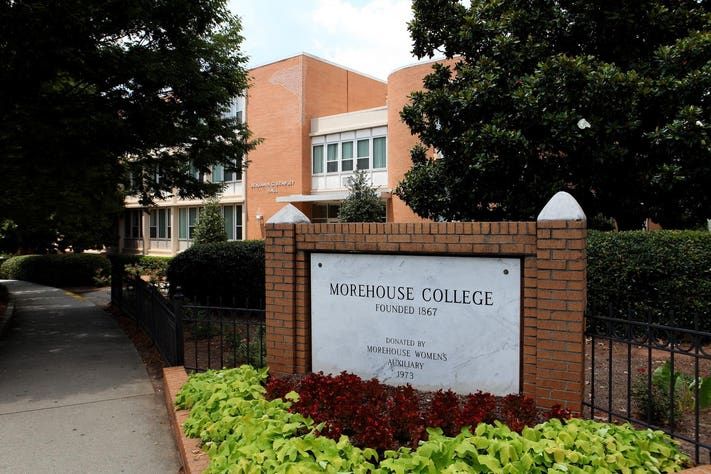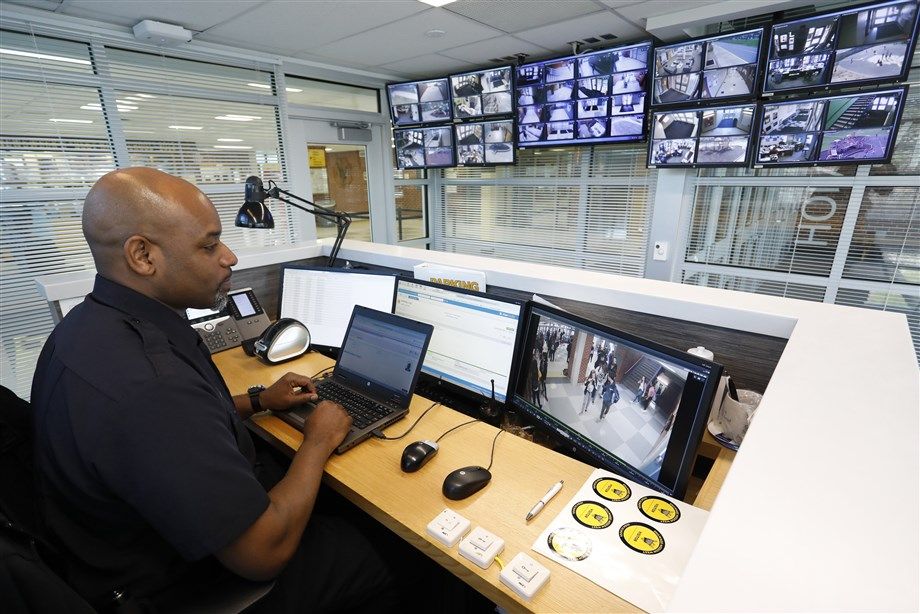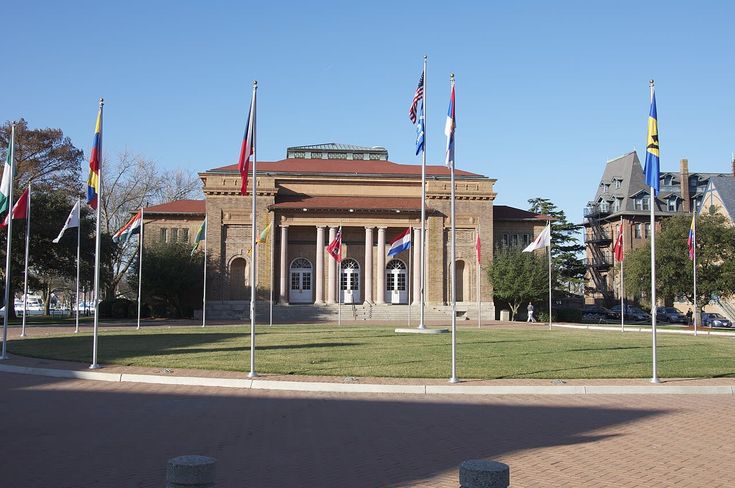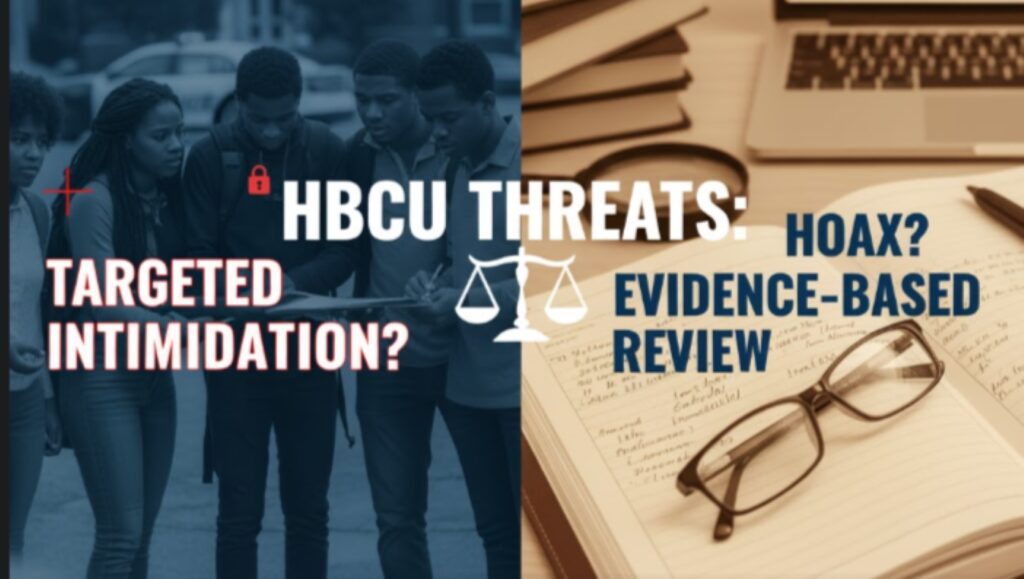Since January 2022, Historically Black Colleges and Universities (HBCUs) have received at least 76 threats, which affected at least 51 campuses and disrupted 77 days of classes.
And in September 2025, the United States witnessed another wave of threats targeted at HBCUs. These threats were sent to students at Hampton University, Virginia State University, Southern University and A&M College, Clark Atlanta University, and Alabama State University.
The threats contained explicit graphic details of gun violence, and it was clear that it was meant to scare Black students. Some of the threats mentioned explosive devices or a mass shooting. These words caused panic in HBCUs, prompting university presidents to shut down their campuses to ensure the safety of students and staff.
The presidents and students saw the threats as an act of intimidation and terror against the Black community. It reminded them of a similar wave of threats received by HBCUs in 2022. But despite the similarity and the fear felt by those affected, the FBI had another opinion.
These framings by both sides affect the response to these threats, as well as federal funding and policy in internal campus security and students’ mental health.
According to a Reuters report, the FBI said that while they take all threats seriously, there was no clear indication that the ones received by the HBCUs were credible. The organization also stated that they were aware that several HBCUs have received “hoax threat calls.”
This statement did not sit well with many in the Black community, especially the Congressional Black Caucus. They called for a swift investigation, with Rep. Yvette Clarke (D-N.Y.), chair of the caucus, calling it “…A chilling reminder of the relentless racism and extremism that continues to target and terrorize Black communities in this country.”
Many shared this opinion, referencing again the extensive bomb threats HBCUs received in 2022. The question, therefore, is: Are black institutions under targeted attack? Are these threats systemic targeting or isolated hoaxes?
We will take a fact-based look at this question, covering why the debate about the framing of HBCUs matters, the different perspectives, the historical context, and what HBCUs and policymakers should do next. And then you can choose where you stand.
But first, let’s start with why the discussion on the framing of HBCU threats matters.
Why Does the Debate About the Framing of HBCU Threats Matter?
The debate about the framing of HBCU threats stems from the fact that the FBI sees the threats as hoaxes, while the Black educational institutions and community at large see it as systemic, hatred-driven terrorism.

The FBI framed the threats as “hoaxes” due to the absence of actual explosive devices. But the Black community argues that, though there are no actual bombs, there is the fear and emotional trauma caused by each threat.
These framings of the threats have consequences, particularly in federal funding and policy related to internal campus security and students’ mental health. Here’s how they play out:
Policy and Funding Decisions
As mentioned, the framing of the threats determines the resources schools get and the degree of government support and intervention. If considered a bomb threat hoax, the policy will be reactive and minimal, with no further substantial funding. This is because the threats will be seen as criminal harassment or swatting. In such cases, the government will only focus on digital defenses to block the threat emails.
On the other hand, if the threats are seen as systemic targeting, then the governmental response will be more proactive. The threats will be seen as domestic terrorism and civil rights violations. As such, there will be significant financial allocations to HBCUs, mainly for security grants, which are historically underfunded.
Also, viewing the threats as systemic targeting will prompt the FBI to prioritize identifying those sending the messages. This equally sends a message that attacks against Black institutions will not be tolerated or swept under the carpet.
Campus Trust and Mental Health
Aside from the impact on policy and funding, failing to recognize the threats to HBCUs as racial discrimination affects the trust that students and Black educational institutions have in the government. Students will feel that the government does not care for their safety, and the fear of feeling unsafe can lead to psychological trauma.
In such an instance, every stakeholder recognizes that the goal extends beyond merely preventing a bomb blast to countering the hostile ideology.
The trauma will be compounded by the fact that there is a history of violence against Black education, case in point, the Birmingham Church Bombing. But if the threats are acknowledged as targeted acts of terror, it gives validation to the fears of Black students.
This validation means the schools will get the tools they need to safeguard themselves and help their staff and students deal with the mental health fallouts of the threats. It also helps the students and staff feel heard and seen, and not brushed aside.
Safety Planning and Security Measures
Another area where the framing of HBCU threats has an impact is in safety planning and security measures. When framed as a hoax, law enforcement focuses more on the immediate crisis. They run bomb sweeps and lockdown schools, but this does not address the source of the hate.

The reverse is the case when the threats are seen as systemic targeting. In such an instance, every stakeholder recognizes that the goal extends beyond merely preventing a bomb blast to countering the hostile ideology. Governments and schools will invest in a security system capable of detecting threats before they are sent out, and they will train teams in de-escalation, not just defense.
Ultimately, the debate about the framing matters because if the threats are not properly framed, the motives behind them cannot be thoroughly addressed, and those affected will not feel safe.
The Historical Context Behind Today’s Fears
The truth is, historically, Blacks haven’t felt very safe in America. They have been the recipient of a long history of racial intimidation to suppress their progress and empowerment. The threats HBCUs face today are a continuation of historical trauma.
Attacks Suffered by Black Institutions Across History
In different eras, white supremacists have used terror to keep down the Black community. Here are some examples:
- Antebellum Era (1800): During this era, independent Black churches like the AME Church were attacked because they were venues for self-governance movements and resistance to slavery. One notable attack in 1822 was against the African Church in Charleston.
- Civil Rights Era (1950s-1960s): In the civil rights era, churches like the 16th Street Baptist Church in Birmingham were bombed for being sanctuaries for the Civil Rights Movement. The attack against the church in Birmingham was to halt the political and social advancement of the Black community.
- 1990s Resurgence: After the civil rights era, things seemed to get better. But in the 1990s, there was a resurgence of attacks against Black institutions. Over 30 churches were burned in the South in the mid-1990s, causing the federal government to pass the Church Arson Prevention Act.
- Modern Era (2022-Present): Today, the targets have shifted from churches to schools, but the threat remains the same: to create widespread chaos, anxiety, and delay the growth of Black students. The only difference is that instead of burning, the perpetrators use bomb threat hoaxes.
HBCUs provided Black students with the opportunity to become professors and leaders, training them to be economically empowered.
Why HBCUs Symbolize Progress—and Draw Fire
The question now is, why do the threat makers see HBCUs as progressive? The answer is simple. HBCUs were established before 1964, at a time when Black students were segregated and not allowed to attend predominantly white colleges.
HBCUs provided Black students with the opportunity to become professors and leaders, training them to be economically empowered. Also, HBCUs allowed students to thrive academically, socially, and emotionally. There was no segregation on these campuses, and no feeling of being a racial minority.
But most importantly, HBCUs served as a base for social change. With knowledge came empowerment and intellectual curiosity, two factors that contributed to the Civil Rights Movement. So, HBCU threats aim to destroy all these, drive fear into the Black community, so much so that they stop fighting back and seeking empowerment.
The Debate Perspective 1 — “This Is Racially Targeted Intimidation”
This is why the Black community—including HBCU presidents, civil rights organizations like the NAACP and LDF, and many students—want the FBI to take the threats as racially targeted intimidation.
The argument for this is built on three key points:
The Pattern of the Targeted Attacks
HBCUs are targeted at a rate higher than other higher institutions in the United States. Also, the timing of the threats is usually around Black History Month, and the threats are similar to the tactics used by the Ku Klux Klan decades ago. All these show that the attacks are strategic, well thought out, and not random.
Although most threats turned out to be hoaxes, it does not lessen the psychological impact, as students and staff of the affected schools end up anxious and live in fear.
Clear Racist Motive
Another fact that supports the racially targeted discrimination argument is the motive behind the threats. The threats usually contain vile, explicitly racist language. It also mentions manifestos that explicitly target Black students and institutions, making their intent clear. This is why university presidents insist that the attacks target institutions that represent “excellence, empowerment, and progress.”
Real and Traumatic Impact
The final argument is that these threats have a real and traumatic impact on the Black community. Although most threats turned out to be hoaxes, it does not lessen the psychological impact, as students and staff of the affected schools end up anxious and live in fear. This ultimately harms their mental health and ability to focus.
The FBI has stated that they treat the threats as “highest priority” and are committed to identifying those motivated by “racially or ethnically motivated violent extremism and hate crimes.” However, until they record a significant arrest, those affected continue to see the threats as a modern form of racial terror and not a hoax.
The Debate Perspective 2 — “These Are Isolated Hoaxes, Not a Coordinated Campaign”
Now to perspective 2.
Those on this side of the argument see the threats as isolated hoaxes and not a coordinated campaign. And they base this view on these three points:
- No Credible Threats: Since the FBI has repeatedly classified the HBCU threats as “hoax threat calls” because of no actual explosive device, the threats are seen as not credible. The fact that the attackers do not follow through on the threats supports the argument that there is no credible threat.
- Criminal Disruption: Another key fact is that the threats are seen as criminal disruption. The FBI also sees them as a form of swatting on a large scale, since the threats intimidate and create mass panic, but there is no physical violence. The perpetrators only want to force lockdowns and cancel classes.
- Perpetrators Profile: The third point is that most of the identified perpetrators are teenagers in the United States and overseas actors. The FBI made this identification in 2022 following a wave of threats to HBCUs. This discovery fueled the FBI’s belief that the threats are malicious, not a coordinated domestic act of terror like the infamous Ku Klux Klan.
Additionally, those on this side of the argument warn against using words like “racial terror” since there is no physical violence. The argument is that exaggerating threats or using inflammatory language can divert resources from more serious and immediate threats or cause unnecessary fear.
Impact on Students, Faculty, and Families
As mentioned, the HBCU threats impact students, faculty, families, and the whole Black community. Below are the two main impacts we’ve identified:
Psychological and Emotional Trauma
Students, faculty, and families feel intense fear and unsafe whenever the threats happen. They have to confront the fact that although HBCUs were built for safety, they can still be attacked and remain a “targeted community.”
Hoax or not, it doesn’t take away the emotional, psychological, and academic impact of the threats.
After the wave of threats in 2022, Marian Turner, an international studies major at Spelman College in Atlanta, told The Guardian, “I was caught off-guard because we’re in 2022 and still facing the same problems as our grandparents and their grandparents. It just really brings to light everything that’s happening, because we’re actually experiencing it.”
She added, “I shouldn’t have to live in fear when I’m just going to get an education.” This shows how real the threats are to student safety and how sacred thousands of students who are facing them feel.
Academic and Economic Disruption
Aside from feeling unsafe, there are also the academic and economic costs of these threats. In 2022, the multiple threat wave led to the closure of schools for 77 days. The closures affected semester schedules and academic continuity.

Also, repeated evacuations, building sweeps by law enforcement agents, increased security patrols, and the buying of new alarm and surveillance systems cost money. All these put a strain on HBCUs that already have to deal with underfunding.
Therefore, although the FBI may see the threats as a hoax, the attacker’s aim to disrupt education, instill fear, and force significant financial diversion is still achieved. And hoax or not, it doesn’t take away the emotional, psychological, and academic impact of the threats.
What Should HBCUs and Policy Makers Do Next?
Having seen the arguments of both sides of the divide and the impact of these threats on students and staff of affected universities, the next question is what actions these Black institutions and policymakers can take to prevent the threats and mitigate the impact.
There are three top recommendations:
Smarter Threat Identification and Introduction of Digital Forensics
According to security experts, HBCUs must move away from reactive bomb sweeps to proactive intelligence gathering in the digital world. This means the FBI and other law enforcement agencies, like the DHS, must allocate significant resources to digital forensics to identify the source of the threats.
Furthermore, HBCU campuses should introduce a structured behavioral threat assessment team comprising campus police, mental health professionals, and administration. The team will be trained to recognize behavioral patterns that are evident before mass violence, which will allow for early intervention.
Improve Campus Safety Without “Fortress” Culture
Experts also recommend improving campus security without compromising on the open, supportive, and culturally validating environment of HBCUs. So, HBCUs, instead of using a discrete fortress security system, should adopt layered secret security models.
Policymakers must advocate for better federal funding for HBCUs to close the funding gap between them and other schools.
For example, they can place non-escalatory barriers in strategic places, control access to sensitive areas, and improve lighting, emergency communications, and perimeter monitoring. Additionally, staff and students should be trained on situational awareness and informed about the protocols for reporting suspicious activities.
Prioritize Policy and Advocacy
Lastly, policymakers must advocate for better federal funding for HBCUs to close the funding gap between them and other schools. Also, the funds should be easily accessible without several cumbersome layers of red tape.
There should be an apparent commitment to prosecute perpetrators of HBCU threats to send a message of deterrence and zero tolerance for domestic extremists and civil rights violators, irrespective of their age.
Where Do You Stand?
So far, we’ve covered the historical context behind HBCU threats, the two sides of the debate, and why the discussion matters. We’ve also looked at the impact of these threats on students, faculty, and families, and what HBCUs and policymakers can do to move forward.
Now, the question you need to answer is: Where do you stand?
Do you think that the attacks against HBCUs are targeted and require more attention and action than what the FBI and government currently give them? Or do you think the FBI is correct, and the threats are just hoaxes, and there will never be any actual violence against Black academic institutions?
Share your opinion with us, and keep it respectful and solution-based. Remember, as David Bohm, the physicist and philosopher, once said, “The spirit of dialogue is not to win, but to learn.”
References and Further Reading:
- Black US Colleges Restrict Campus Activity After Threats
- Congressional Black Caucus Calls for Investigation Into HBCU Threats
- HBCUs Targeted With Coordinated Threats
- HBCUs at Risk: Examining Federal Support
- Prevent Mass Violence
- HBCUs Experience More Bomb Threats, Violent Rhetoric
- Educating Our Own: The Historical Legacy of HBCUs and Their Relevance for Educating a New Generation of Leaders
- FBI Addresses Ongoing Threats Targeting Historically Black Colleges and Universities
- UNCF Condemns Threats Against HBCUs, Renews Call for Congressional Funding to Secure Campuses


